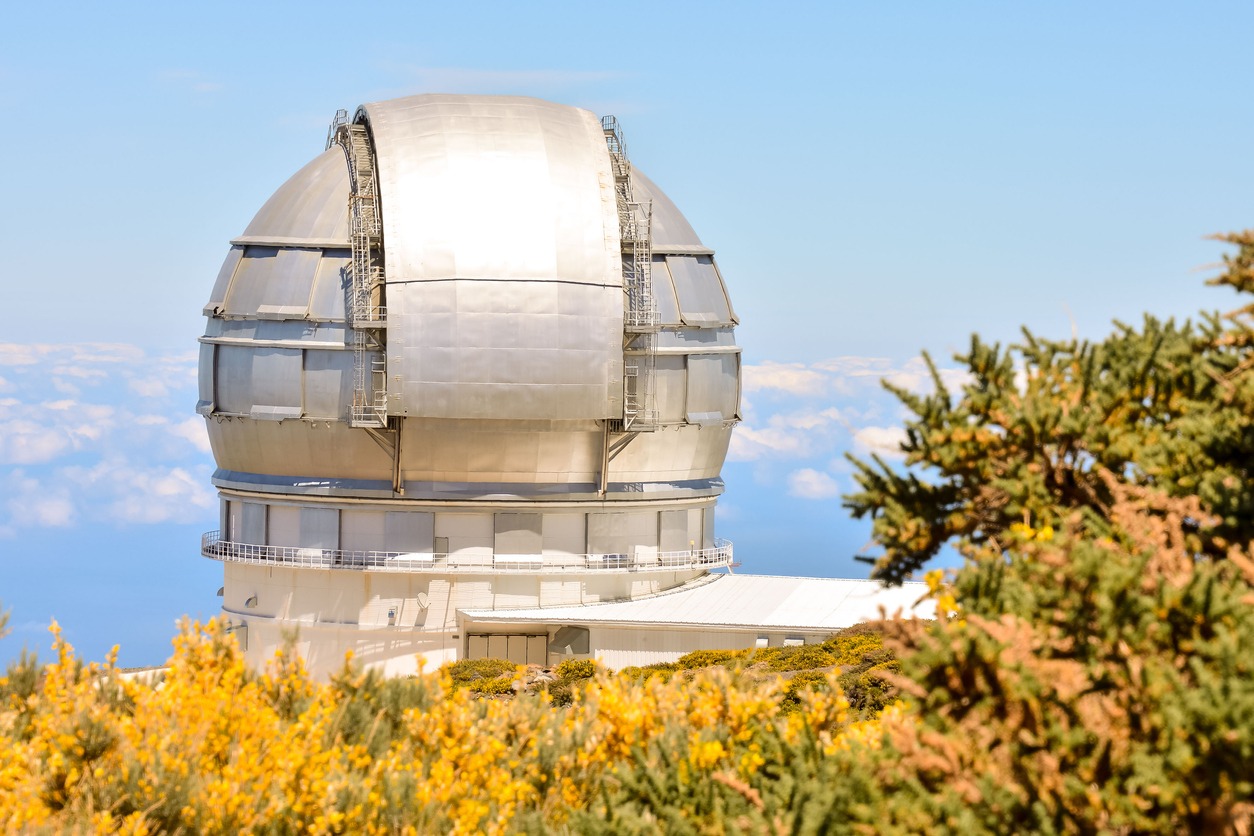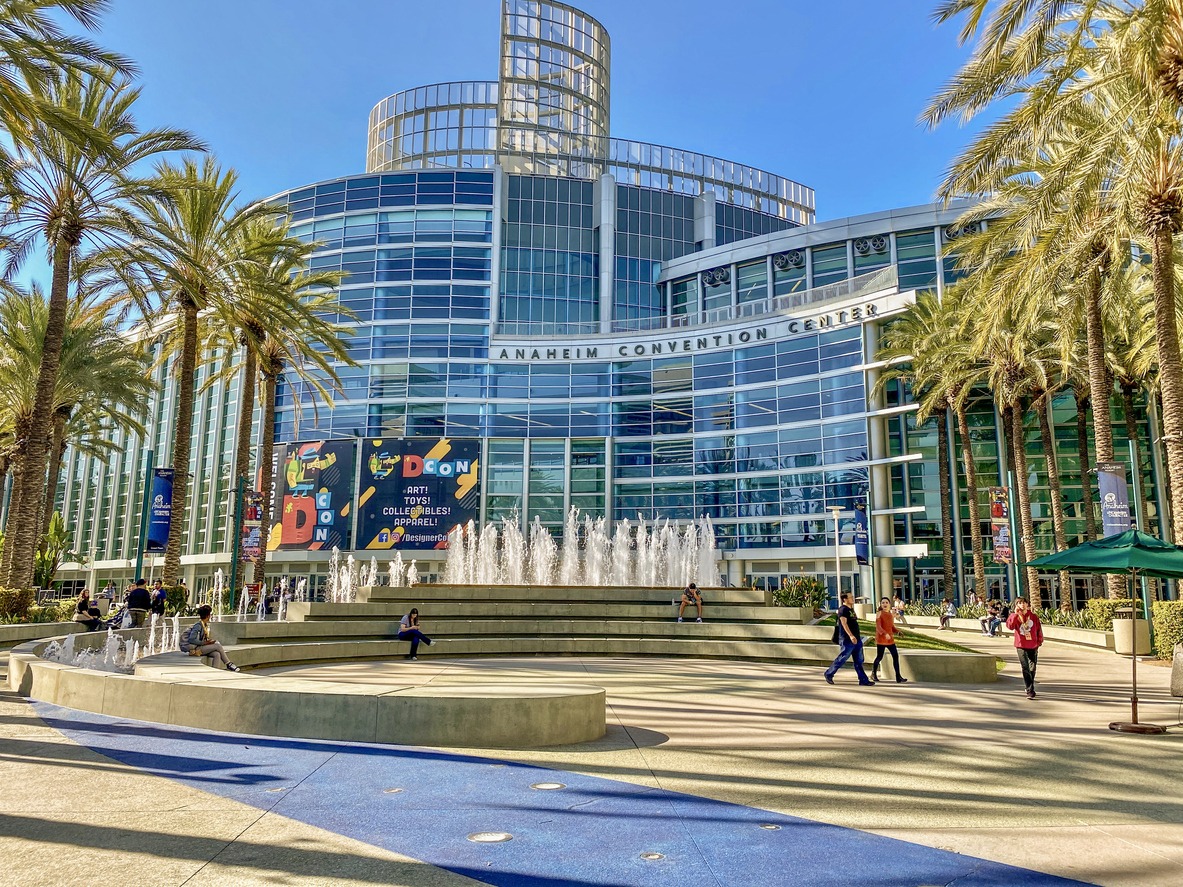The mid-twentieth century was a pinnacle in American architecture because of the large number of structures influenced by the advancements in the industry, automobile culture, and the space era. The emergence of atomic technology promised an advanced nuclear-powered society, while the space race made people think humans could soon visit the Moon or Mars. As a futuristic era loomed, the change to ultramodern architecture was almost unavoidable. Southern California’s Googie architecture is a remarkable example of the modern mid-century style.
Understanding Googie Architecture
Googie is a modern or ultramodern architectural style that helps people understand post-WWII American futurism, which many a “golden age” of futurist architecture. Googie is a futurist type of architecture that emerged in the mid-20th century in the United States, primarily in Los Angeles and the surrounding suburbs. Googie buildings have bold geometric designs, upswept roofs, a sense of motion, and a combination of materials from steel to glass to rocks. Googie is a low-rise architectural style used in restaurants, car washes, bowling alleys, gas stations, drive-in movies, apartment buildings, and single-family residences. In this style, everything is exaggerated, from the angles to the colors to the plastic and steel. It is influenced by the ambitions and aspirations of the Space Age and the visions of rocket ships. The Googie design incorporated atomic-era futurism together with Populuxe and Doo Wop.
The Googie architecture reflected this optimism. Unconventional designs, bright colors, and modern materials like glass, chrome, and plastic were used. Bold, playful, and joyful. Googie architecture was accessible to the average American since restaurants, car washes, and bowling alleys were erected in it. No architect was needed to design your sleek, futuristic home. You can obtain Googie style by simply driving to a diner. Googie can be found in the 1964 New York World’s Fair, the Space Needle in Seattle, Disneyland’s Tomorrowland, Arthur Radebaugh’s postwar illustrations, and in coffee shops and hotels around the U.S. Googie houses are still popular in various cities of the U.S. For instance, if you check out Googie houses for sale in Los Angeles or California, you will find houses with cantilevered roofs in bold colors.
History of Googie or Space Architecture
Googie is a funny word that loops around your tongue with vowels. Googie (pronounced GOO-jee) in the 1950s and 1960s architectural style that combines Modernism, American automotive culture, and Space-Age retro-futurism. The architectural style began in Southern California in the late 1940s with three designs for Coffee Dan’s by John Lautner, famed for the Chemosphere house in Los Angeles. Douglas Haskell coined “Googie” after seeing a West Hollywood coffee establishment. Googie developed parallel to other design fields and Post-war pop culture, especially the newly ubiquitous TV. At the time, architects thought it was not pleasant because of this, but now we can see that it shows how exciting it was to be an American at the time. According to architectural historian Alan Hess, the first Googie building was Bob’s Big Boy in Burbank, California, designed by Wayne McAllister in 1949.
In the 1950s, Googie design flourished in Southern California and extended nationwide. Wildwood, New Jersey, Seattle, Washington, Colorado Springs, Colorado, Phoenix, Arizona, Miami, Florida, and the 1964 New York World’s Fair all had Googie structures. Retro-futurism in the United States flourished in the 1950s and ’60s when the country was wealthy with resources and eager to deliver on the technological promises made during World War II. In the golden era of futuristic design, French artists and designers used stainless steel and other future materials to create opulent furnishings, objects, apparel, and accessories in the 1960s and 1970s, known as the “Space Age.”
Architecture like this had never been seen before, with sweeping arches, bright hues, and spacecraft-like structures. Googie architecture was done in a few unusual homes with progressive tastes, like John Lautner’s Elrod House in Palm Springs. Another example is Charles Deaton’s house in Denver, CO, and John Lautner’s Chemosphere in Los Angeles. Robert Bruno’s Steel House in Texas, which he started building in 1974, and Vard Wallace’s Volcano House in Newberry Springs, CA, which Harold Bissner designed for him.
However, with the Apollo missions of the 1960s and 1970s, the space age and atomic age achieved their peak, and Googie architecture fell out of favor. Since then, many Googie buildings have been demolished, and those that survive are now considered retro marvels.
Key Features of Googie Architecture
A key characteristic of Googie architecture was its emphasis on form and using different, contrasting materials in various structural elements. Towering neon signs ornamented with a boomerang or starburst motifs were common, as were sweeping canopies, folding eaves, and tapering pylons. After World War II, circular stands were replaced by ever-expanding structures designed by Googie architects. Carhops and parked vehicles were protected from the elements under a giant rocket ship-shaped cover at Tiny Naylor’s. To catch the attention of passing motorists, Googie buildings have dynamic shapes and neon signs that change color in response to the passing traffic. To entice motorists, Googie architects drew inspiration from vehicle iconography; tailfins became wedge-shaped roofs or V-shaped canopies, while molded headlights were transformed into parabolas or boomerangs.
Unlike classical architecture, Googie architecture was created for the general populace, not the rich and famous. Googie architects drew on the design vocabulary of science fiction to make these constructions accessible and understandable during the 1950s Space Race between the United States and the Soviet Union. Modernity was embraced completely by Googie architecture, whose futuristic shapes captured postwar optimism and progress. A Googie building’s freeform compositions contrast with rigid geometry in many aspects, although this is not to say that they don’t share any similarities. To generate transparent volumes, Googie buildings commonly employed steel frames and glass facades, allowing their interiors to be seen from the outside. Exaggerating Modernism’s use of cantilevered canopies, Googie architects would utilize steel, gunite, and neon to create eye-catching tailfins on their buildings. They also used high-tech materials and advanced technical procedures to exaggerate these elements further.
Iconic Googie Architecture
1. Theme Building at Los Angeles International Airport
Los Angeles International Airport’s Theme Building is a Space Age landmark (LAX). It’s an example of “Googie” architecture, influenced by “Populuxe” architecture. The city made the Airport Theme Building’s exterior and interior a historical and cultural landmark in 1993. The structure seems like an upside-down flying saucer with its characteristic white color and four protruding legs. James Langenheim made the first design of Pereira & Luckman.
The building’s characteristic crossed arches seems as homogenous structures due to hollow stucco-covered steel trusses atop four steel-reinforced concrete legs 15 feet above the ground. Built at the onset of the Space Age, the skyscraper shows how Los Angeles combined aeronautics, pop culture, design, and architecture.
2. Phoenix’s 300-Bowl Stadium
Phoenix, Arizona, which still maintains multiple infrastructures like the 300 Bowl constructed in 1960, the facility today known as AMF Christown Lanes, built in the style of Googie architecture, is one of the many cities around the United States that adopted Googie design. The bowling alley venue features upswept rooftop extinctions that give the impression of launch pads.
3. Seattle, Washington’s Space Needle
The Space Needle, created for the 1962 Seattle World’s Fair’s “Age of Space” theme, is one of the most recognizable Googie architecture. The tower’s saucer-shaped observation deck can enjoy views of the city and surrounding areas, including Mount Rainier and Puget Sound.
4. Los Angeles, California – Norms
There are numerous Norms in Los Angeles, but the oldest one on La Cienega, constructed by Santa Monica architect Eldon Davis in 1957, is the most well-known. Googie architecture enthusiasts should take a trip to the famous coffee house/restaurant, which features a diamond-shaped roof, a five-part sign, and booths resembling bucket seats.
5. Anaheim, California’s Linbrook Bowl
Googie design is best appreciated when seen at night, such as the Linbrook Bowl’s neon sign in Anaheim. The establishment opened its doors in 1958 and has maintained its retro vibe throughout its existence, right down to the diagonal entry to the bowling alley, which features artificial rock walls.
From automobiles to appliances to even entire cities, the space era profoundly impacted the design of everything from automobiles to structures. Although it was a trendy architectural style then, Googie managed to hang on for almost two decades until it faded from favor. There are efforts to conserve any remaining Googie structures as historical landmarks, even though many were demolished during the space race. Some Googie architecture, like the earliest McDonald’s in the United States, has even qualified for inclusion in the National Register of Historic Places.” You might also want to check out our post on Famous Architects and Their Works.
Unveiling the future of the past: a new look at Googie architecture’s role in defining mid-century America.
Discover the roots of Googie architecture and how it shaped the American landscape in our latest post.


